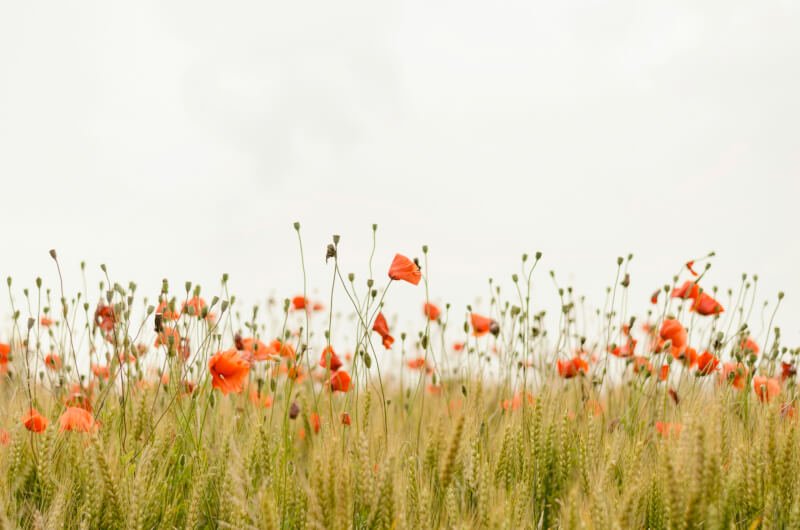The Ranger Handbook: Not for the Weak or Fainthearted is a must-have companion for anyone daring enough to embark on the adventurous path of becoming a ranger. Packed with invaluable knowledge, this comprehensive guide is designed to equip you with the skills and expertise necessary to navigate the most demanding terrains and overcome the toughest challenges. Whether you’re a seasoned ranger or a novice enthusiast, this handbook is your trusted companion, offering a wealth of information that will inspire and empower you to push your limits and conquer the untamed wilderness. So grab your backpack and prepare to embark on an exhilarating journey, armed with the knowledge found within the pages of the Ranger Handbook.
Overview
1.1 What is the Ranger Handbook?
The Ranger Handbook is a comprehensive manual that serves as a guide for United States Army Rangers. It is a compact and portable resource that provides essential information on a wide range of subjects including field operations, leadership, teamwork, training, and specialized operations. The handbook is designed to equip Rangers with the knowledge and skills necessary to successfully navigate challenging and complex environments.
1.2 Who is the target audience?
The primary target audience for the Ranger Handbook is the United States Army Rangers, specifically those serving in the 75th Ranger Regiment. However, the handbook is also useful for other military personnel, outdoor enthusiasts, and anyone interested in learning more about the principles and techniques employed by elite military units.
1.3 Importance of the Ranger Handbook
The Ranger Handbook plays a crucial role in the training and preparation of Rangers. It serves as a reliable source of information that covers a wide range of topics relevant to their operations. The handbook serves as a constant companion for Rangers, accompanying them on their missions, and providing guidance on critical tasks. It is an indispensable tool that helps ensure the success and safety of Army Rangers in the field.
History
2.1 Origin of the Ranger Handbook
The origins of the Ranger Handbook can be traced back to the early years of the United States Army Ranger program. As Rangers emerged as a specialized unit during World War II, there was a need for a standardized manual that could provide guidance and direction to the newly formed Ranger units. This led to the creation of the first Ranger Handbook, which served as a foundational document for the development of subsequent editions.
2.2 Evolution and updates
Over the years, the Ranger Handbook has undergone several updates and revisions to reflect changes in tactics, technology, and the evolving nature of warfare. The handbook has been refined based on lessons learned from conflicts such as the Korean War, Vietnam War, and more recent military operations. Each update incorporates new information, techniques, and best practices to ensure that Rangers are equipped with the most up-to-date knowledge and skills.

Content and Structure
3.1 Organization and layout
The Ranger Handbook is organized in a logical and user-friendly manner. It is divided into chapters and sections, each covering specific topics. The layout of the handbook is designed to facilitate quick reference and easy navigation, making it accessible even in stressful and time-sensitive situations. The use of clear headings, subheadings, and bullet points helps Rangers locate and absorb information efficiently.
3.2 Topics covered
The handbook covers a wide range of topics that are essential for Rangers to master. Some of the key subjects covered include navigation and map reading, tactical operations, survival techniques, emergency procedures, leadership, teamwork, decision-making, communication, weapons, specialized equipment, and special operations. By addressing these diverse areas, the Ranger Handbook ensures that Rangers are equipped to handle a wide range of challenges they may encounter in the field.
3.3 Key sections
While every section of the Ranger Handbook is important, there are a few key sections that warrant special attention. The section on navigation and map reading equips Rangers with crucial skills to effectively and accurately navigate in any terrain or weather condition. The section on tactical operations provides insights into offensive and defensive tactics, ensuring that Rangers can execute missions with precision and effectiveness. Furthermore, the section on leadership and teamwork empowers Rangers to build cohesive teams and make informed decisions even in high-pressure situations.
Training and Preparation
4.1 Role of the Ranger Handbook in training
The Ranger Handbook serves as an invaluable resource throughout the training process for Army Rangers. It provides a standardized and comprehensive framework for learning and practicing essential skills. Rangers rely on the handbook to study and understand both the theory and practical aspects of their training. By following the guidance outlined in the handbook, Rangers are able to develop the necessary proficiencies and competencies required for their role.
4.2 Physical and mental requirements
Becoming an Army Ranger requires exceptional physical and mental fortitude. The Ranger Handbook acknowledges these demands and provides guidance on training and conditioning strategies to help individuals prepare for the intense physical challenges they will face. It emphasizes the importance of physical fitness, mental resilience, and the ability to operate effectively under stress. By adopting the strategies outlined in the handbook, aspiring Rangers can enhance their capabilities and increase their chances of success during their training and beyond.
4.3 Conditioning and preparation strategies
The Ranger Handbook offers valuable insights on conditioning and preparation strategies that are crucial for the success of Army Rangers. It emphasizes the need for a balanced approach, incorporating physical conditioning exercises, mental strengthening techniques, and appropriate rest and recovery. The handbook provides specific guidance on various training methods such as endurance training, strength training, and mental resilience exercises. By following the recommended strategies, individuals can build the physical and mental resilience necessary to endure the challenges they will face as Rangers.

Field Operations
5.1 Navigation and map reading
The ability to navigate accurately is a fundamental skill for Army Rangers. The Ranger Handbook provides extensive guidance on the use of maps, compasses, and other navigational tools. It covers topics such as terrain association, dead reckoning, and locating points of interest. By mastering the skills and techniques outlined in the handbook, Rangers can confidently navigate unfamiliar terrain and effectively plan and execute their missions.
5.2 Tactical operations
Tactical operations are at the heart of the Army Ranger’s role. The Ranger Handbook delves into various aspects of tactical operations, including offensive and defensive operations, patrolling, and close quarters combat. It provides guidance on mission planning, reconnaissance, target acquisition, and communication procedures. By studying and applying the principles and techniques presented in the handbook, Rangers can enhance their combat effectiveness and ensure the success of their operations.
5.3 Survival techniques and emergency procedures
Survival techniques and emergency procedures are critical skills for Rangers operating in dangerous and unpredictable environments. The Ranger Handbook equips Rangers with the knowledge and skills necessary to survive and thrive in adverse conditions. It covers topics such as shelter construction, water procurement, food gathering, medical treatment, and signaling techniques. By incorporating the principles and strategies outlined in the handbook, Rangers can increase their chances of survival and effectively respond to emergencies.
Leadership and Teamwork
6.1 Building effective teams
Effective teamwork is essential for the success of any mission, and the Ranger Handbook recognizes its importance. It provides guidance on team composition, roles and responsibilities, communication, and conflict resolution. The handbook emphasizes the need for trust, cohesion, and shared purpose within a team. By following the recommendations outlined in the handbook, Rangers can foster a culture of teamwork and build effective teams capable of achieving their objectives.
6.2 Decision-making and critical thinking
Rangers are often required to make quick and informed decisions in high-pressure situations. The Ranger Handbook offers guidance on decision-making processes and critical thinking techniques. It provides a framework for assessing situations, analyzing options, and making sound decisions under time constraints. By incorporating the decision-making strategies outlined in the handbook, Rangers can navigate complex scenarios with confidence and make effective choices that contribute to mission success.
6.3 Communication and coordination
Clear and effective communication is crucial for the success of any military operation. The Ranger Handbook provides guidance on communication procedures, signaling techniques, and the use of various communication devices. It underscores the importance of concise, accurate, and timely communication to ensure coordination and unity of effort. By adhering to the communication principles outlined in the handbook, Rangers can maintain situational awareness, exchange critical information, and facilitate effective coordination with their team members.

Weapons and Equipment
7.1 Firearms and weapon systems
Proficiency with firearms and weapon systems is essential for Army Rangers. The Ranger Handbook provides comprehensive information on various firearms, including rifles, pistols, and machine guns. It covers topics such as weapon handling, marksmanship, zeroing procedures, and maintenance. By following the guidance presented in the handbook, Rangers can maximize their effectiveness with their assigned weapons and ensure proper care and maintenance of their equipment.
7.2 Specialized equipment
In addition to firearms, Army Rangers utilize a range of specialized equipment to accomplish their missions. The Ranger Handbook provides insights into the selection, use, and maintenance of this equipment. It covers topics such as protective gear, night vision devices, communications equipment, and demolitions. By familiarizing themselves with the information provided in the handbook, Rangers can effectively employ specialized equipment and leverage its capabilities to enhance their operational effectiveness.
Special Operations
8.1 Overview of special operations
Special Operations encompass a variety of missions that require specialized skills and capabilities. The Ranger Handbook provides an overview of the different types of special operations and their unique characteristics. It offers insights into unconventional warfare, counterterrorism, direct action, and other specialized missions. By understanding the nature of special operations, Rangers can better comprehend their role and mission objectives within the larger context of the military’s objectives.
8.2 Ranger capabilities and roles
The Ranger Handbook outlines the capabilities and roles of Army Rangers in special operations. It delves into the attributes and qualities that make Rangers an indispensable asset in various mission scenarios. The handbook highlights the importance of adaptability, versatility, and mission-focused mindset in special operations. By studying and internalizing the information presented in the handbook, Rangers can embrace their roles and contribute effectively to the success of their special operations missions.

Endurance and Resilience
10.1 Mental and physical challenges
Army Rangers operate in extremely demanding and challenging environments that test their mental and physical endurance. The Ranger Handbook acknowledges the difficulties that Rangers will face and provides strategies for overcoming these challenges. It emphasizes the importance of mental resilience, stress management, and maintaining a positive mindset in the face of adversity. By adopting the techniques outlined in the handbook, Rangers can develop the mental and physical toughness necessary to endure and excel in challenging circumstances.
10.2 Overcoming obstacles
Obstacles are inevitable in any undertaking, and Army Rangers are trained to overcome them. The Ranger Handbook offers guidance on overcoming obstacles, both physical and mental, that Rangers may encounter in the field. It covers topics such as obstacle negotiation, problem-solving, and adapting to changing circumstances. By applying the principles and techniques presented in the handbook, Rangers can navigate obstacles effectively and overcome any challenges that stand in their way.
In conclusion, the Ranger Handbook is an invaluable resource for Army Rangers. Its comprehensive coverage of various subjects crucial to the success of Rangers ensures they are well-prepared and equipped to face the challenges of their missions. From training and preparation to field operations, leadership, teamwork, and specialized operations, the Ranger Handbook serves as a guide and companion for Rangers on their journey. It embodies the spirit of the Rangers – not for the weak or fainthearted, but for those who are willing to push themselves and rise above the challenges to succeed in their mission.


